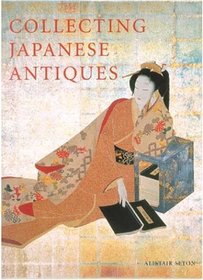Search -
Collecting Japanese Antiques
Collecting Japanese Antiques
Author:
From the time Japan commenced trading with the West in the sixteenth century, Japanese arts and crafts have intrigued and delighted Westerners, especially lacquer, screens, swords, and porcelain. When the Japanese opened their country to trade and tourism in the mid-1850s, Westerners were quick to spot the beauty and value of select Japanese woo... more »
Author:
From the time Japan commenced trading with the West in the sixteenth century, Japanese arts and crafts have intrigued and delighted Westerners, especially lacquer, screens, swords, and porcelain. When the Japanese opened their country to trade and tourism in the mid-1850s, Westerners were quick to spot the beauty and value of select Japanese woo... more »
ISBN-13: 9780804820943
ISBN-10: 0804820945
Publication Date: 12/15/2004
Pages: 304
Rating: ?
ISBN-10: 0804820945
Publication Date: 12/15/2004
Pages: 304
Rating: ?
0 stars, based on 0 rating
Publisher: Tuttle Publishing
Book Type: Hardcover
Other Versions: Paperback
Members Wishing: 1
Reviews: Amazon | Write a Review
Book Type: Hardcover
Other Versions: Paperback
Members Wishing: 1
Reviews: Amazon | Write a Review
Genres:
- Arts & Photography >> Art >> Instruction & Reference >> Collecting
- Crafts, Hobbies & Home >> Antiques & Collectibles >> Art
- Crafts, Hobbies & Home >> Antiques & Collectibles >> General




